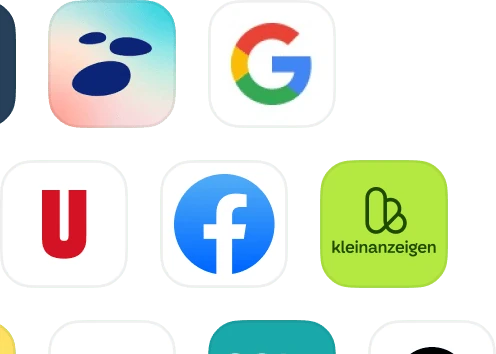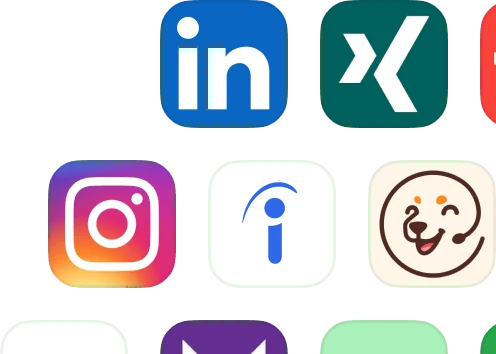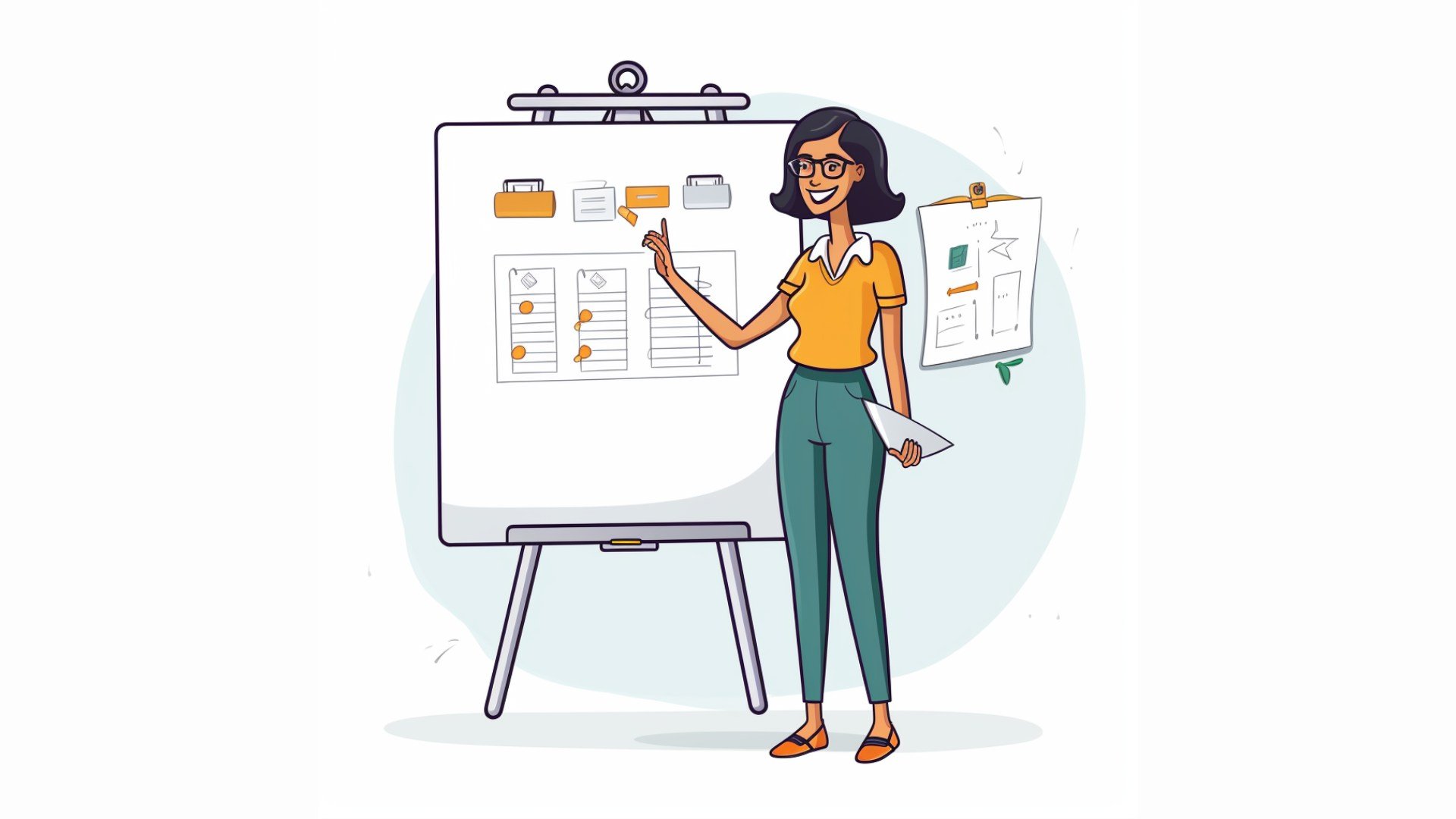AI recruiting: How to make AI part of your hiring process
AI and automation are changing the ways that companies find, attract, and hire talent. Discover how to most effectively make these technologies part of your talent acquisition and recruitment strategy.
Table of contents
AI and automation have revolutionised the relationship between people and technology, and this change has significantly impacted the recruitment process, too. HR professionals and hiring managers have found that AI in recruitment can help their recruiting by helping them attract, engage, and develop talent more efficiently.
But there are some things you should keep in mind before making AI and automation part of your recruitment strategy. Read on to learn how you can take advantage of the benefits of AI recruiting while avoiding the risks.
What is AI recruiting?
AI recruiting (sometimes also called robot recruiting) is rapidly growing in popularity in human resources. It’s about using Artificial Intelligence (AI) to optimise the recruiting process, focusing on efficiency and objectivity.
AI recruiting software can quickly and precisely analyse large amounts of applicant data, enabling them to identify suitable candidates for a position more effectively than traditional methods. This includes evaluating resumes, assessing skills, and even conducting interviews using advanced algorithms.
Advantages of AI recruiting
In the recruitment process, experts focus primarily on two key metrics: Time to hire and quality of hire. These can be positively influenced by the use of AI, but there are more advantages of AI in recruiting.
Time to hire: faster hiring with AI
Finding the right person for a position can be very time-consuming. AI can significantly speed up this hiring process.
AI systems take over repetitive tasks such as searching candidate resumes for keywords (CV parsing), scheduling interviews, and entering data into applicant tracking systems (ATS) and similar recruitment software solutions.
This saves valuable time that you can use instead for direct contact with applicants. AI makes the hiring process more efficient, significantly reducing the time to hire.
Quality of hire: hiring more suitable employees with AI
Another challenge is effectively sifting through a pool of qualified candidates to find the most suitable job seekers. AI systems can quickly and precisely analyse applications for key characteristics (applicant screening) and identify the right candidates.
This improves the quality of hire by screening candidates and ensuring that only the most qualified applicants are considered for further discussions.
In JOIN’s free recruiting software, you can already set screening and knock-out questions when creating your job advertisement to qualify incoming applications quickly.
Minimising biases with AI and finding potential candidates
Another advantage of AI in recruiting is its ability to minimise unconscious biases. AI recruiting tools (when used correctly) make decisions based on data and programmed criteria, not unconscious bias, leading to a fairer and more objective selection of candidates.
Additionally, AI tools enable a more dynamic talent acquisition. Instead of focusing only on active applicants, AI can help talent acquisition professionals sourcing passive candidates who might fit the company well. This significantly expands the talent pool and allows companies to approach talents they might otherwise have overlooked.
Finally, AI offers the ability to evaluate applicants based on their competencies, not just their experience in certain roles. This allows companies to identify candidates who bring specific skills missing in the team and thus have the potential to excel in various areas, even if they are not a perfect fit for a specific position.

Disadvantages of AI in recruitment
Although artificial intelligence is a powerful tool in recruiting, several important aspects must be considered before implementing this technology.
Need for quality data
One of the biggest challenges in using AI in recruiting is the need for high-quality data. AI-powered tools are only as good as the data they’re trained with.
This means hiring companies must have a robust dataset covering a wide range of applicant profiles and competencies. Incomplete, outdated, or biased datasets can lead to ineffective or even misleading results. So, it’s crucial for recruiting teams to invest in collecting and maintaining high-quality data.
Managing employee concerns
The introduction of AI in recruitment can raise concerns among existing employees, particularly regarding potential job losses or reduced human interaction.
It’s important to choose a transparent and gradual approach to address these concerns. This includes communicating the benefits of AI, offering training and demonstrations on using the technology, and getting feedback. This helps create acceptance and involve employees in the change process.
Costs
Acquiring and implementing machine learning in recruiting software can be a significant financial investment. Costs vary depending on the complexity and functionality of the software.
Companies must therefore carefully consider whether the investment in AI technology is proportional to their hiring needs and whether potentially more cost-effective solutions, such as advanced applicant tracking software with integrated recruitment automation tools, could be a suitable alternative.
Discover in our HR software comparison which software is right for your company based on functionalities, user-friendliness, integration options, and costs.
Potential for bias
Although AI systems can help reduce human biases, they’re not immune to human biases themselves. AI algorithms can unwittingly adopt biases from training data, leading to systematic favouritism or disadvantage of certain applicant groups.
Therefore, it is essential that AI systems are trained with a diverse and representative database and are regularly checked for biases. In addition, decisions made by AI systems should be monitored and evaluated by humans to ensure they are fair and objective.
In summary, while the use of AI in recruiting tools offers many advantages, it also needs to be carefully planned and executed to avoid potential disadvantages.
Does AI in recruitment lead to bias?
AI can “learn” biases by being given skewed data to work with.
For example, few companies have embraced AI and automation as much as Amazon. They built an AI to rate candidates on a 1-5 scale using CVs submitted over the last 10 years as a guide.
In 2015, they realised that since these CVs mostly came from men, the AI had taught itself that male candidates were better, and started eliminating CVs that included the word “women”, along with graduates from two all-women colleges.
Amazon abandoned the project in 2018, and stressed that while they used the AI’s recommendations, they never relied on them completely, underscoring the need for human supervision of AI in recruitment.
As Nihar Shah, teacher of machine learning at Carnegie Mellon University, warns, “How to ensure that the algorithm is fair, how to make sure the algorithm is really interpretable and explainable—that’s still quite far off.”
Another AI studies the speech and facial movements of a candidate taking part in a video interview to determine whether they would fit the company’s profile. Dr Eleanor Drage of Cambridge University dismisses this idea as having “no scientific basis”.
Dr Drage noted that changing the contrast, brightness, or saturation would change a candidate’s score, and Bavarian Broadcasting researchers found wearing glasses or a headscarf would also interfere with the AI’s recommendation.
The lesson to learn from Amazon and similar examples is not that AI and automation shouldn’t be a part of your recruitment strategy, but that they can only be effective tools when carefully managed by skilled recruiters.
Read our article on how to screen resumes both fast & effectively
How can I start using AI and automation in my recruitment?
Ready to begin leveraging AI and automation in recruiting? Then check out these use cases to help you get started!
AI-generated job ads
Writing job ads can be a tedious task. An easy way to automate this process is the use of artificial intelligence. With an AI tool in recruiting, writing job ads becomes more efficient, and you no longer need to copy templates from documents or reinvent the wheel.
But, to stand out from the crowd, you should perfect your job descriptions, benefits, and company description. This makes your company more attractive to applicants. Read here what benefits professionals really want and how to write the perfect job ad.
But, to stand out from the crowd, you should perfect your job descriptions, benefits, and company description. This makes your company more attractive to applicants.
With JOIN, you can easily create your job ad with AI using our job ad builder, and the job ad will even be tailored to your company!
Job ad targeting
There are hundreds of job boards to choose from, including niche job boards that focus on specific locations, industries, or positions. As a result, choosing the right platform can quickly become overwhelming.
Artificial intelligence can help by recommending job sites that meet your company’s specific hiring needs.
Suggested reads: The best free job boards & the best paid job sites
Smarter spending
Even experienced recruiters make mistakes, such as spending too much on a job ad or too little on promoting a key position.
At JOIN, we use AI to power our “Smart Spend” feature, which uses performance data from thousands of premium job ads to create a recruiting strategy that places your budget where it brings the most benefit.
Multiposting
You save time writing a job ad in one place and then publishing it automatically with one click on several job platforms using a multiposting tool.
With automated solutions, posting your job opening to hundreds of job sites at once becomes a breeze!
Automated emails
Responding to applications is a repetitive task that takes up a lot of time. Many HR professionals don’t even bother to reply to unsuccessful applicants.
Instead, use an automated tool that fills out a prepared email with candidate data and sends it for you.
This way, you can respond to good candidates faster and prevent them from looking elsewhere. Ignoring unsuccessful applicants is a common mistake by recruiters that harms their employer branding.
Remember: Recruiting is marketing!
Recruitment analytics
AI can help you refine your recruitment strategy by telling you how your job ad is performing, so you can tell which jobs are working for you and which ones aren’t.
Take a look at our article on how to start analysing your recruitment process or check out our full list essential recruitment KPIs and metrics to track!
Make use of AI now
According to SHRM, 88% of companies worldwide are already using AI in some form for HR. A recruiting strategy combining AI and automation with skilled professionals will be the most successful way to win the race for the best candidates.
With an applicant tracking system like JOIN, you can use automation tools to make your recruiting process faster, easier, and more cost-effective and harness AI’s benefits in recruiting safely and manageably.
On our Recruitment and HR blog, you can learn weekly how to optimise your recruitment efforts further. Here are a few examples:
Frans Lelivelt
Frans is JOIN's multilingual Senior Content Manager. His main topic of interest in the recruitment space is DEI and how companies can reduce their (unconscious) biases to make the world of work a fairer, kinder place for everyone. Outside of work, he tries to do the same for animals, spending much of his spare time in the kitchen preparing plant-based feasts.


![How recruitment automation can benefit your hiring process [tips and tools]](https://cdn-public-assets.join.com/2022/07/33bf324f-stephen-dawson-qwtcej5clys-unsplash_1_1920x1280.jpeg)

